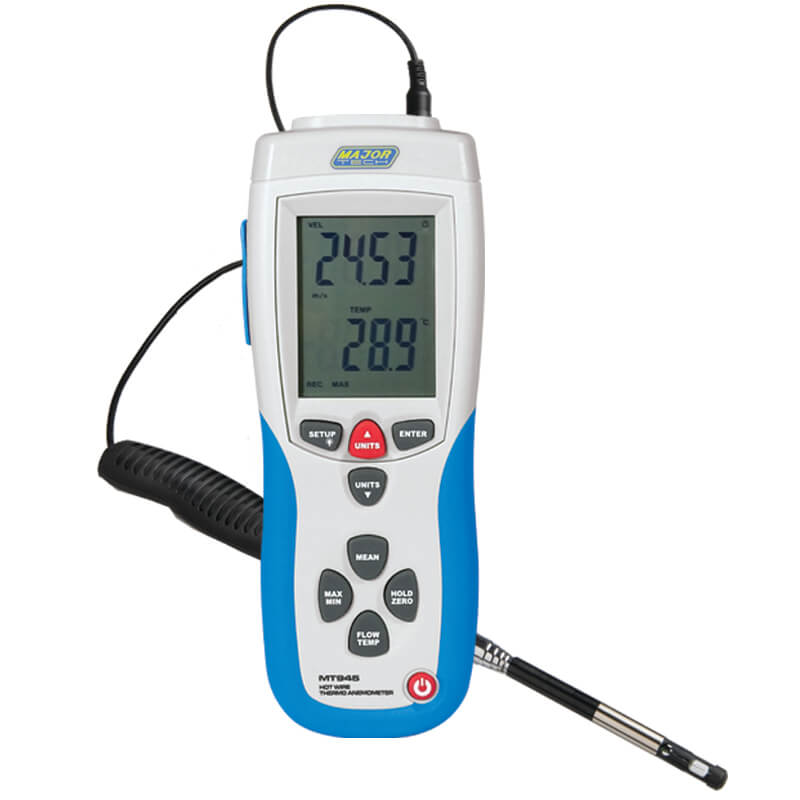Comprehending Different Kinds Of Anemometers for Different Applications
Comprehending Different Kinds Of Anemometers for Different Applications
Blog Article
Anemometers Unveiled: Recognizing Their Relevance in Ecological Surveillance and Security Steps
The duty of anemometers in environmental tracking and security measures is frequently undervalued, yet their value is obvious. From weather forecasting to aeronautics safety and security, anemometers play an essential function in providing exact information that informs decision-making procedures and enhances total security.
History of Anemometers
The evolution of anemometers can be mapped back to the ancient worlds where rudimentary wind gauging gadgets were initial utilized. One of the earliest known anemometers was the hemispherical mug anemometer developed by Leon Battista Alberti in the 15th century.
Over the years, innovations in technology led to the growth of even more contemporary anemometers, consisting of ultrasonic anemometers and laser Doppler anemometers, using raised accuracy and effectiveness in measuring wind rate and instructions. The background of anemometers showcases a remarkable trip of technology and development in the field of weather forecasting.
Sorts Of Anemometers
Throughout the area of meteorology, numerous sorts of anemometers have actually been created to precisely measure wind speed and instructions. The most typical kind is the cup anemometer, which contains three or four mugs installed on straight arms that revolve with the wind. As the mugs spin, the rate at which they turn is directly symmetrical to the wind rate. One more commonly made use of type is the vane anemometer, which features a tail or fin that straightens itself with the wind instructions. This alignment enables the device to establish the wind instructions. Sonic anemometers utilize ultrasonic signals to determine wind speed and direction properly. They are typically used in research applications because of their high precision. Hot-wire anemometers operate based upon the concept that the cooling result of wind on a heated wire is symmetrical to the wind speed. These anemometers are appropriate for gauging low wind rates with high accuracy. Each sort of anemometer has its strengths and is selected based on the certain demands of the tracking task available.
Applications in Weather Forecasting
Having actually gone over the different kinds of anemometers utilized in weather forecasting for gauging wind rate and direction, it is essential to discover their useful applications in the field. Anemometers play a crucial function in meteorology by giving precise and real-time data on wind conditions (anemometer). Meteorologists utilize anemometers to keep track of wind speed and direction to forecast weather condition patterns, issue cautions for extreme weather events like typhoons, storms, and tornadoes, and evaluate climatic problems for air travel safety and security
In weather forecasting, anemometers help in comprehending regional and local wind patterns, which are essential for predicting weather adjustments and figuring out climatic fads. These gadgets are likewise utilized in study to examine microclimates, metropolitan warmth islands, and air contamination diffusion. Furthermore, anemometers are utilized in farming to maximize plant monitoring practices, such as irrigation and pesticide application, based on wind conditions.
Relevance in Aeronautics Safety And Security
An integral facet of ensuring aeronautics safety hinges on the thorough surveillance of wind problems making use of anemometers. Anemometers play a critical function in air travel by offering real-time information on wind rate and direction, assisting pilots in making educated decisions throughout liftoff, trip, and touchdown. Unforeseeable and strong winds can substantially affect aircraft procedures, making it important for aeronautics authorities to rely upon precise wind measurements to ensure the security of guests and crew.

In the vibrant atmosphere of official source aeronautics, where even small adjustments in wind rate and direction can have extensive results, anemometers stand as crucial devices for promoting secure and protected air traveling.
Role in Environmental Study
Just how do anemometers add to developments in ecological research? Anemometers play an important function in ecological study by giving necessary information on wind speed and instructions. This info is vital for comprehending different climatic procedures, such as air contamination diffusion, weather patterns, and environment modification. By precisely determining wind qualities, anemometers help scientists evaluate the motion of pollutants airborne, evaluate the impact of industrial discharges, and forecast the spread of pollutants in the setting.


Final Thought
In verdict, anemometers have actually played an important duty in ecological surveillance and safety and security measures. With an abundant history and different types available, these tools have actually been commonly utilized in weather forecasting, air travel safety and security, and ecological research study. Understanding the value of anemometers is crucial for accurately determining wind speed and instructions, which is important for predicting weather patterns, ensuring risk-free air travel operations, and performing environmental studies - anemometer. Their contributions to these areas can not be taken too lightly.
One of the earliest well-known anemometers was the hemispherical mug anemometer invented by Leon Battista Alberti in the 15th century. Over the years, advancements in modern technology led to the growth of even more contemporary anemometers, consisting of ultrasonic anemometers and laser Doppler anemometers, using enhanced precision and effectiveness in gauging wind speed and direction. Hot-wire anemometers run based on the concept that the cooling result of wind on a heated wire is proportional to the wind speed. Meteorologists make use of anemometers to keep track of wind rate and direction to forecast weather condition patterns, problem cautions for extreme weather occasions like tornadoes, storms, and tornados, and evaluate climatic conditions for air travel safety.
Comprehending the significance of anemometers is important for precisely measuring wind rate and direction, which is crucial for predicting weather condition patterns, making sure secure air travel procedures, and performing environmental research studies. (anemometer)
Report this page